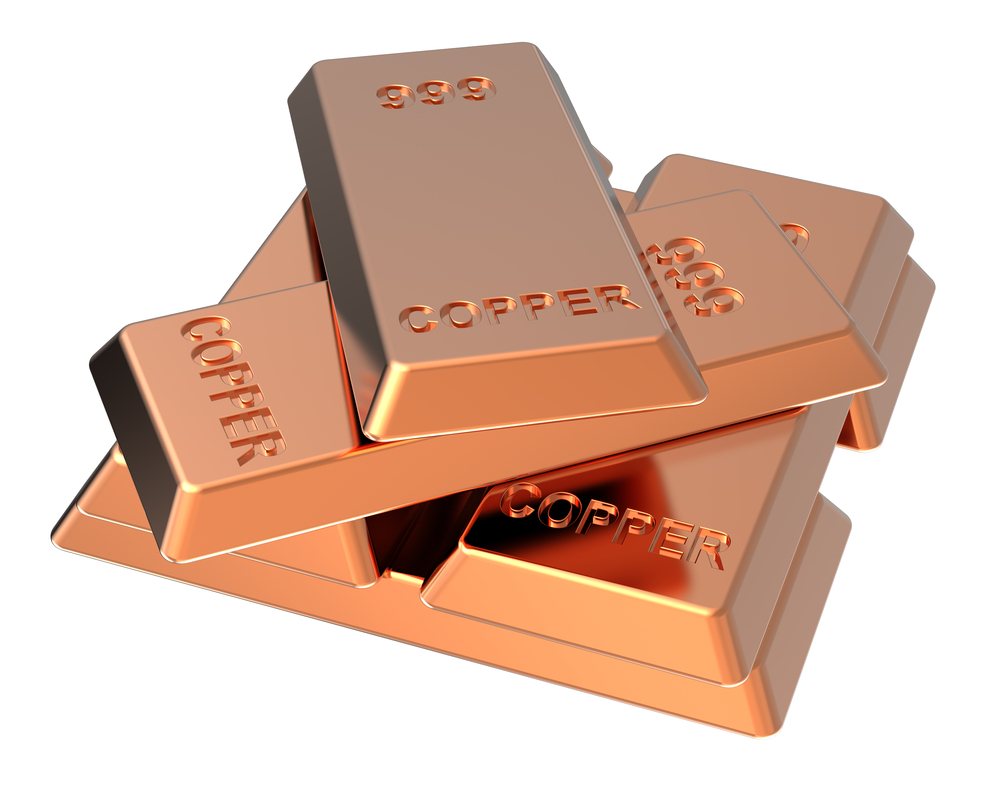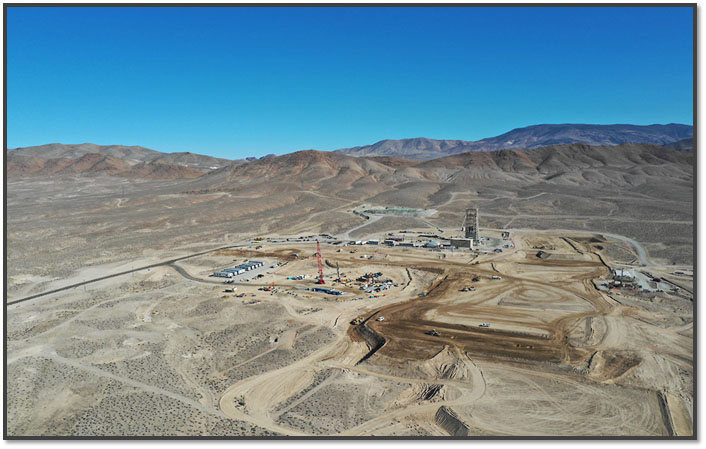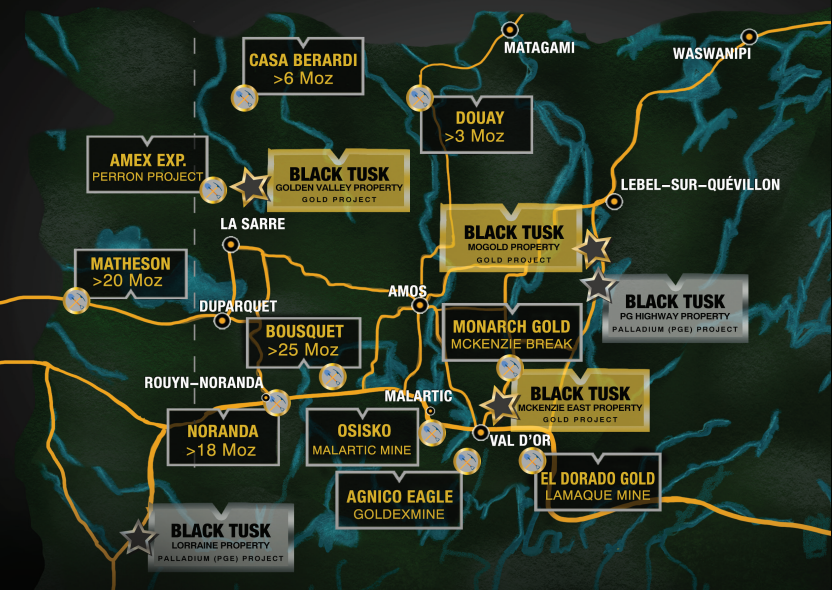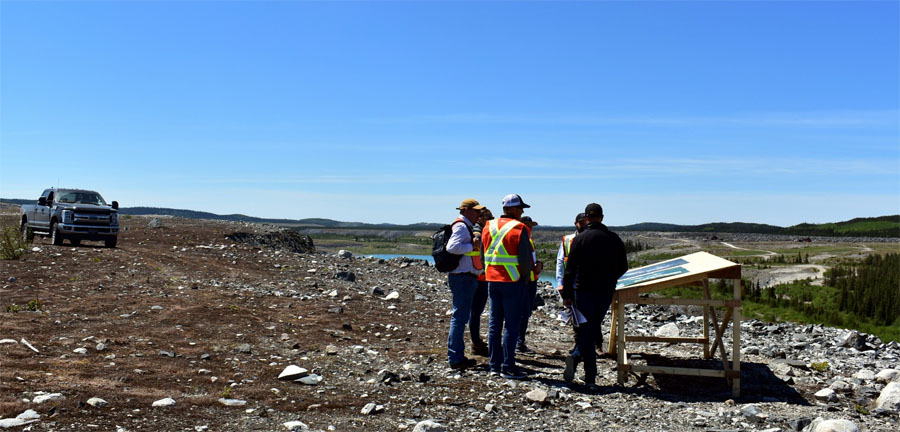The Metals Report: Tungsten is used in many applications—to make tools, drill bits, glass bottles, aluminum cans, steel and wire—because it has a high melting point and is very dense. It's a very useful metal, but the British Geological Survey called it an endangered substance in a 2012 report. Why is that?
Ken Chernin: Tungsten ranked second behind rare earths in the British Geological Survey's 2012 supply risk index based on a number of factors like location and concentration of production and reserves, but the report highlighted that tungsten (as well as rare earths) has lower recycling and low substitutability. The supply risk for tungsten stems from China's role in the industry. China accounts for approximately 83% of global tungsten concentrate production and about 62% of global tungsten reserves. China became a significant player in tungsten production in the mid-1980s. By the late 1990s, it had flooded the global market with tungsten causing concentrate prices to plunge below most western producer's variable cost. As a result, the vast majority of western mines were closed.
With low tungsten prices, there was very little investment in new tungsten projects in the past 20-plus years. Given that only a handful of tungsten mines operated without significant interruptions, technical experience in the Western world has essentially evaporated. Therefore, finding a team with experience working with tungsten is a significant barrier to entry. Furthermore, North American Tungsten Corp. Ltd.'s (NTC:TSX) Cantung mine in Canada's Northwest Territories is the most significant producer in terms of volume outside of China and has historically been somewhat of a swing producer, which likley didn't make the tungsten industry appealing to investors.
TMR: Tungsten is not listed on the London Metal Exchange and is traded on the spot market, which generally leads to more price volatility. What's your forecast for ferrotungsten prices for the remainder of the year?
KC: The benchmark for tungsten concentrate is ammonium paratungstate (APT), which is the key intermediate product and most commonly traded tungsten material. The APT benchmark is based on FOB Rotterdam. Tungsten demand is correlated with growth in gross domestic product (GDP). While Europeans' consumption of tungsten is down, Europe only accounts for 12% of global consumption. China and the U.S. account for 55% and 13%, respectively, and their two economies are doing much better. According to Bloomberg, consensus estimates for growth in GDP for China and the U.S. averages 8.03% and 2.50%, respectively, for 2013, 2014 and 2015. The consensus estimate for Europe's growth in GDP during the same period is only 1%. Therefore, there is certainly an argument that APT prices are artificially low and should be higher than the current average of $350/metric ton unit ($350/Mtu), which is up 8.5% relative to the end of 2012.
TMR: This time last year we were looking ahead to a boom year in terms of tungsten pricing. Then the bottom fell out of the market. How did that happen?
KC: I believe that this was largely the result of end users stockpiling tungsten concentrate when prices were rising. In the latter half of last year, they depleted these stockpiles.
TMR: This is a nebulous market, mostly defined by end user agreements. What do investors need to know about it?
KC: As in any mining story, grade is very important. I also like good logistics and supporting infrastructure. But tungsten differs from other industrial metals and minerals and can be a tough metal to process. In fact, it is so specialized that experience with any other metal or material is not transferable. Furthermore, there are primarily two minerals that contain tungsten—wolframite and scheelite—and each requires different milling techniques. Therefore, having geologists and a metallurgist who have significant tungsten specific experience is key.
TMR: Which costs more to process, a wolframite deposit or a scheelite deposit?
KC: Wolframite generally requires a simpler process. The most significant difference between processing wolframite versus scheelite is that scheelite necessitates froth flotation. Flotation is essential in processing scheelite because the scheelite is particularly brittle, and the crushing circuit results in a significant portion of the scheelite crystals being reduced to micro particles, which are too fine to be recovered in a traditional gravity separation circuit.
TMR: What would be considered a high-grade tungsten deposit?
KC: The majority of tungsten deposits contain less than 1.5% tungsten trioxide (WO3), and most have grades of only a few tenths of a percentage point. A very high grade would be over 1%, like North American Tungsten's Cantung mine. In fact, North American Tungsten recently discovered a new zone, which it's calling the Dakota zone. It has a 13.3 foot (13.3ft) interval averaged 1.77% WO3. That's an impressive grade.
TMR: American National Carbide, a tungsten carbide supplier and high-end toolmaker, has expanded its carbide scrap recycling facility to handle up to 1 million pounds (1 Mlb) scrap carbide per year. Will that impact the global tungsten market?
KC: Recycling is extremely important for meeting global tungsten demand. Current estimates of supply from recycling for the global tungsten market are about 35%, which is significant because 10 years ago it was 10%. Given that the U.S. doesn't have any producing tungsten mines, it's a positive for the country. With an improved outlook for U.S. manufacturing coupled with the shale boom, tungsten consumption is likely going to increase, and recycling will play a role in offseting any supply shortfalls.
TMR: Is that a threat to the investment thesis?
KC: No. The gradual increase in recycling over the past ten years bridged the gap between demand and supply. But at 35%, it's maxed. It's believed in the industry that you can't recycle any more than that from scrap. Now that we're capped at 35%, the spread between demand and supply will widen, if anything.
TMR: Is that why you're bullish on tungsten prices moving forward?
KC: It is a component, but more significant is the belief that no new tungsten projects are coming on-line in the next 12–18 months. Then there is China's role. China accounts for 83% of global production and has considerable influence on tungsten prices. I don't think China is looking to weaken Western producers as it would be more beneficial to maintain healthy prices to fund its businesses, its growth and its move into downstream and higher-margin tungsten products. China can respond quickly to drops in tungsten prices. For example, it was reported in one publication in January that the majority of tungsten miners were unwilling to sell their tungsten concentrate at lower prices because of the bullish outlook. This acts as somewhat of a floor, because the drop in supply would improve pricing.
"Recycling is extremely important for meeting global tungsten demand."
I think we've seen the floor. I think we're going to see APT prices back up around the $400/Mtu mark, if not by late 2013 then by early to mid-2014.
TMR: Where should an investor park some of her/his hard-earned cash in this sector?
KC: You have to be selective. My top pick is Almonty Industries Inc. (AII:TSX.V) CEO Lewis Black and Chief Financing Officer Dennis Logan, who achieve their goals on time and often under budget. I haven't heard of many mining stories with that kind of track record. Black has a lot of skin in the game. Through his private company, his stake is 37%. He won't overpromise; he's not a promoter. The team he brought from the Panasqueira mine in Portugal has a lot of experience working with tungsten and they work extremely well together.
TMR: In December 2012, Almonty boosted tungsten recoveries at its Los Santos mine in Spain to almost 65%. The previous operator averaged recoveries of about 52% in fiscal 2011. Is there room for Almonty to further boost recoveries without boosting costs?
KC: Absolutely. Almonty is going to put in some additional gravity tables and another flotation circuit. I believe this will put recoveries up to 76%. Almonty is not making that claim; that's my number. Also, Los Santos is currently powered by diesel generators, which is expensive, but it should be tying into the national grid in July. I'm estimating it is going to save over $1M/year, and I expect its cash costs to decrease to $130/Mtu.
Almonty also has exploration upside on its Los Santos project. In the company's 2012 drilling campaign, it identified potential mineralized extensions well beyond the zones currently modeled. The deposit remains open to the north and at depth.
"Companies with lower cash costs will weather the storm."
The company recently acquired an option to acquire a brownfield tungsten and tin project: the Valtreixal project in northern Spain. This is not NI 43-101 compliant, but historic estimates indicate there could be 8.65 million tons (8.65 Mt) mineralization grading 0.23% tin and tungsten. The strip ratio has the potential to be 1:1, whereas at Los Santos it's 5:1. Strip ratio refers to the amount of overburden that has to be removed in order to extract the ore. A 5:1 strip ratio means that for every 1 meter (1m) of ore, you have to remove 5m waste rock. If Almonty acquires the project, it could utilize its well-trained, on-the-ground workforce from Los Santos.
TMR: North American Tungsten's Cantung mine is one of the highest-grade tungsten deposits in the world and also a high-cost mine, mostly because of its remote location. Is North American Tungsten looking at ways to reduce its costs?
KC: Yes. It suspended operations from October 2009 to October 2010, when tungsten prices plunged. Logistically, it's a challenge. The location's remoteness will always be an impediment. Earlier this year operations were disrupted for a two-week period due to roads being washed out. Another challenge is that it is power by diesel generators.
The company invested in optimization during the 2009/2010 shutdown, and the results in the past couple quarters have been good. Last quarter, revenues were down 60% versus the previous quarter, due to a delay in the renewal of its supply contract. Operationally, average cash cost of production was $221/Mtu. We were expecting $251. Average production was up 7% to almost 90,000 Mtu. Recoveries were 79.5%. That's an impressive recovery for scheelite.
TMR: What are some other tungsten players that investors ought to know about?
KC: I don't cover Woulfe Mining Corp. (WOF:TSX.V), which has the Sangdong brownfield project in South Korea, but it looks interesting. Before it closed it was one of the larger mines in the world outside China. International Metalworking Cos. (IMC), a subsidiary of Berkshire Hathaway Inc. (BRK:NYSE.A), has a potential agreement in place with Woulfe. Pending the conclusion of due diligence, IMC will invest CA$35M into the Sangdong mine for a 25% interest. Then it will invest a further CA$19.5M in the APT plant for a 55% interest in the APT. Under the terms of the agreement, it will actually put about CA$35M in. This will cover Woulfe's investment, and Woulfe will pay it back out of sales. Under the agreement, which is not definitive, a minimum of 90% of the concentrate produced is guaranteed under the agreement with IMC. If the due diligence comes through, the project appears to be close to being financed.
TMR: How sensitive are these companies to fluctuations in the price of APT?
KC: Most companies are very susceptible to APT prices, but virtually every producer works on offtake agreements based on trailing prices, so they are not at the mercy of sharp declines in the spot prices. But companies with lower cash cost will best weather the storm.
TMR: Thanks, Ken.
KC: My pleasure.
Ken Chernin has been an equity research analyst with Jennings Capital since November 2008. Prior to joining Jennings, Chernin was a special situations analyst at an Atlantic Canadian investment dealer, where he focused on Atlantic Canadian oil and gas, utility, food retail and real estate companies. He also worked as a research associate for a Toronto-based brokerage firm and in risk management for a Canadian funds management firm. He has corporate governance experience with the Clarkson Centre for Business Ethics and Board Effectiveness at the University of Toronto and the Canadian Coalition for Good Governance. Chernin holds a Master of Business Administration from the Rotman School of Management at the University of Toronto and a bachelor's degree in communication from Saint Mary's University, Halifax.
Want to read more Metals Report interviews like this? Sign up for our free e-newsletter, and you'll learn when new articles have been published. To see a list of recent interviews with industry analysts and commentators, visit our Metals Report homepage.
DISCLOSURE:
1) Brian Sylvester conducted this interview for The Metals Report and provides services to The Metals Report as an employee or as an independent contractor. He or his family own shares of the following companies mentioned in this interview: None.
2) The following companies mentioned in the interview are sponsors of The Metals Report: None. Streetwise Reports does not accept stock in exchange for its services or as sponsorship payment.
3) Ken Chernin: I or my family own shares of the following companies mentioned in this interview: None. I personally am or my family is paid by the following companies mentioned in this interview: None. My company has a financial relationship with the following companies mentioned in this interview: Almonty Industries and North American Tungsten. I was not paid by Streetwise Reports for participating in this interview. Comments and opinions expressed are my own comments and opinions. I had the opportunity to review the interview for accuracy as of the date of the interview and am responsible for the content of the interview.
4) Interviews are edited for clarity. Streetwise Reports does not make editorial comments or change experts' statements without their consent.
5) The interview does not constitute investment advice. Each reader is encouraged to consult with his or her individual financial professional and any action a reader takes as a result of information presented here is his or her own responsibility. By opening this page, each reader accepts and agrees to Streetwise Reports' terms of use and full legal disclaimer.
6) From time to time, Streetwise Reports LLC and its directors, officers, employees or members of their families, as well as persons interviewed for articles and interviews on the site, may have a long or short position in securities mentioned and may make purchases and/or sales of those securities in the open market or otherwise.




























































